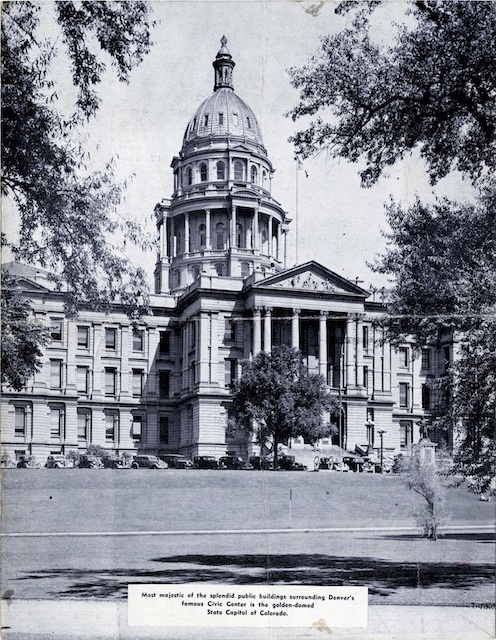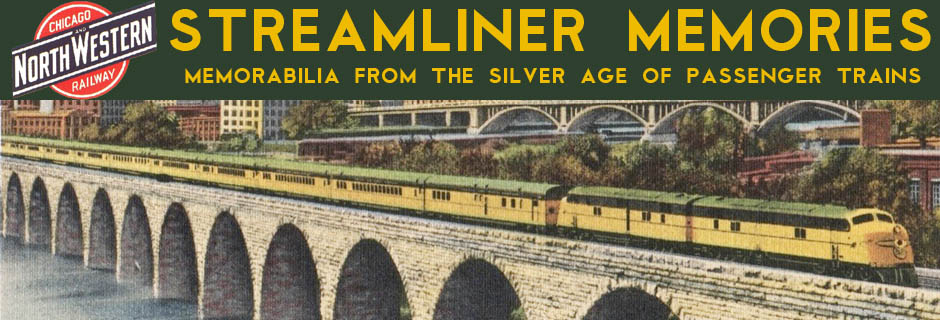After going bankrupt in 1915 from trying to finance construction of the Western Pacific, Missouri Pacific enjoyed the roaring 20s by borrowing money to gain control of a variety of railroads including International Great Northern, New Orleans, Texas & Mexico, and several others. This left it with the highest debt-to-equity ratio of any major southwest railroad, which wasn’t helped by it also being the least profitable such railroad.
 Click image to download a 2.4-MB PDF of this menu.
Click image to download a 2.4-MB PDF of this menu.
In 1929, the oddly named Oris and Mantis Van Sweringen of Cleveland, who controlled the Chesapeake & Ohio, Nickel Plate, Erie, and several other railroads, gained control of Missouri Pacific, but not before rivals played some “dirty tricks” that significantly increased their cost of purchasing control. The Van Sweringen brothers specialized in operating railroads with poor debt-to-equity ratios and everything might have worked out were it not for the crash of 1929.
By 1931 the MP was hemorrhaging cash, but the Vans, as they were known, didn’t want to lose control of it. If the railroad went bankrupt, control would be given to a receiver whose obligation was to pay off the bond holders, while any stockholders were likely to lose their investments not to mention control. But in 1933, Congress passed a new Bankruptcy Act that instead allowed bankrupt railroads to be operated by a trustee who could protect the interests of the stockholders as well as bondholders. Missouri Pacific was the first railroad to take advantage of this law.
As it turned out, the Vans lost control anyway, and Mantis died, apparently from the stress, in 1935 and Oris in 1936. Once worth $100 million (about $2 billion in today’s money) and controlling a railroad and real estate empire worth $3 billion (about $60 billion today), their net worth at their deaths was about $3,000 each (perhaps $70,000 today).
By 1944, when this menu was issued, Missouri Pacific had been profitable for several years and had petitioned to get out of bankruptcy. Its emergence from a trusteeship was delayed, however, by Robert Young, who had taken control of a major part of the Van Sweringen’s rail empire and wanted a better deal for his shares in the company. This wasn’t resolved until 1956, making the MP’s 23 years in bankruptcy one of the longest in U.S. history.
Meanwhile, the back of this menu brags that the railroads collectively were paying about a billion dollars a year in federal taxes (about $20 billion today). During World War I, the menu notes, federal control of the railroads ended up costing the government $1.6 billion (about $25 billion today), so private operation was far more efficient and less costly to taxpayers. It is a little ironic that it is saying this at the same time as it relied on federal law to protect the interests of stockholders and bondholders from the sometimes wild spending by the railroads.
Despite the war, this menu offers table d’hôte meals with a selection of fish creole, pork loin, chicken casserole, or Spanish omelet with sausage, all of which came with soup or appetizer, vegetables (including candied sweet potatoes), bread, salad, dessert, and beverage, for $1.40 to $1.50 ($25 to $27 today) depending on the entrée. The same entrées were 75¢ to 90¢ on the a la carte side.
